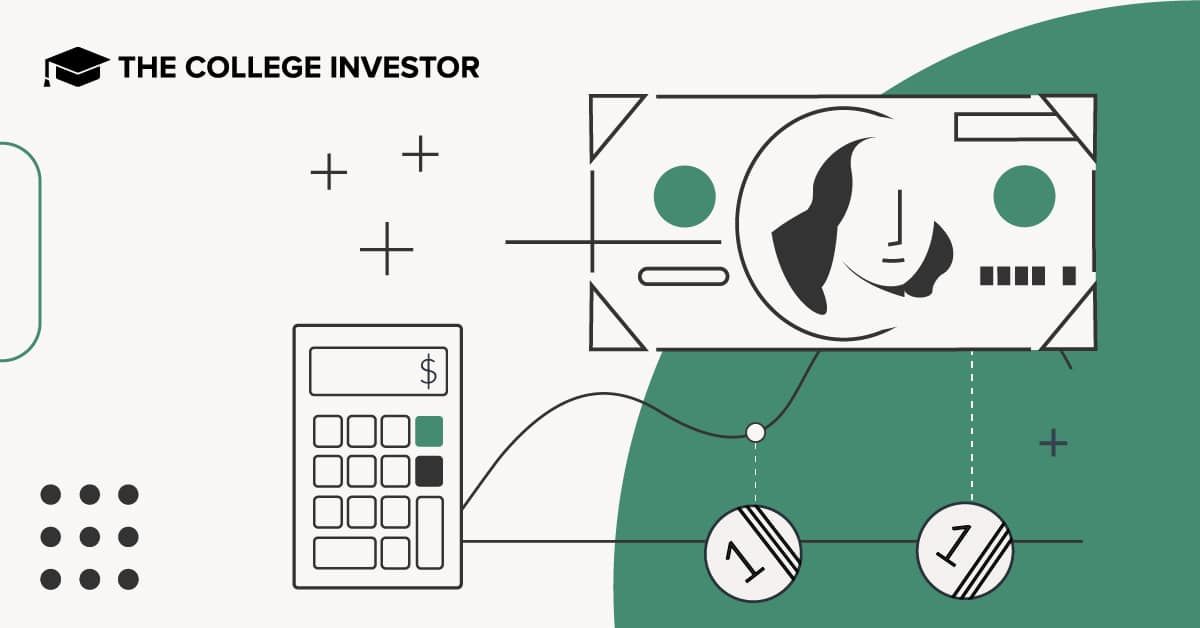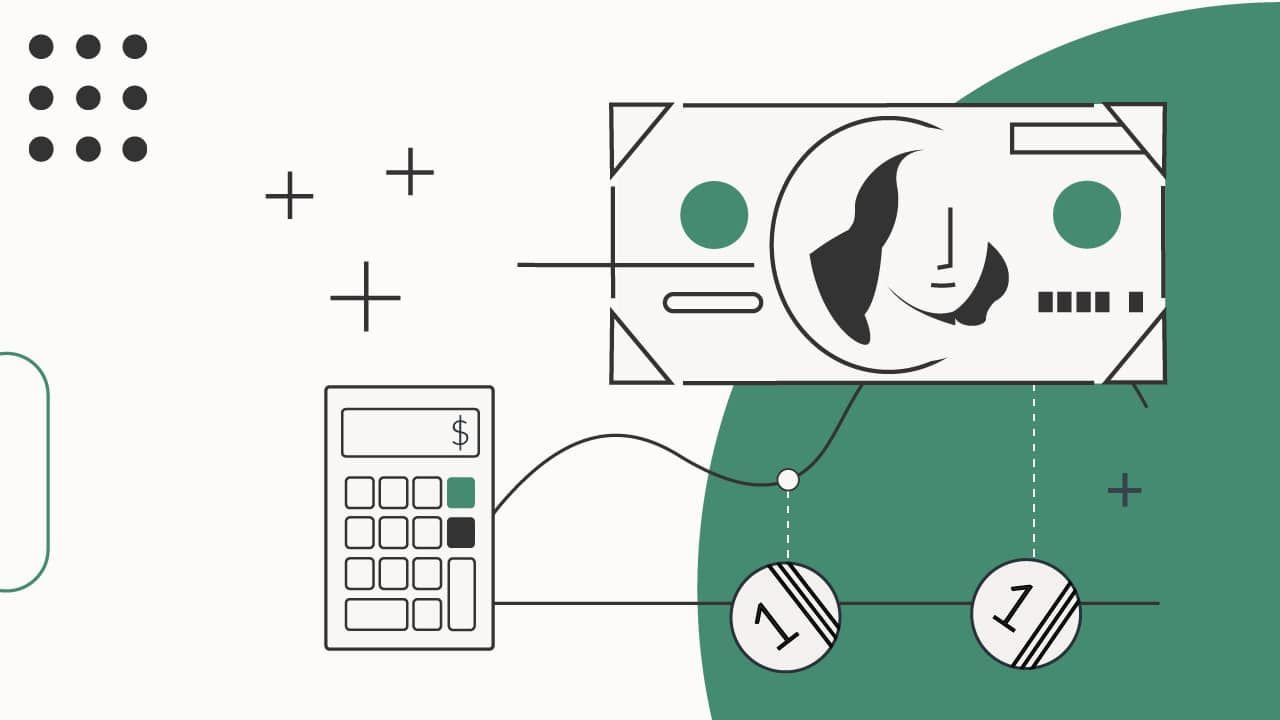
Dollar-cost averaging is a simple but effective strategy for addressing stock market volatility. Instead of trying to time the market with a large lump-sum investment, it invests smaller amounts at regular intervals.
Sometimes, dollar-cost averaging works better than lump-sum investing. Sometimes lump-sum investing works better.
Learn when each option works best.
What Is Dollar-Cost Averaging?
Dollar-cost averaging involves periodically investing a series of equal amounts at regular intervals.
Since the amount invested is constant, this investment strategy buys fewer shares when stock prices are high and more shares when prices are low. It implicitly implements the advice to buy low, sell high.
Dollar-cost averaging addresses the volatility of stock prices by averaging the purchase price over time. As such, it reduces the risk of a bear market or correction, where the stock price might drop soon after making a lump-sum investment.
As a formulaic strategy, dollar-cost averaging avoids emotional decision making, such as the panic-selling, anxiety, fear of missing out and greed that comes with the ups and downs of the stock market. It also helps investors be less emotional about stock market downturns since they are investing smaller amounts at a time.
Dollar-cost averaging is often used with 401(k) retirement plans, where a set percentage or amount of the employee’s salary is contributed to the retirement plan after each paycheck. You invest the money as you earn it. Automatic investment plans for 529 college savings plans operate in a similar manner.
Dollar-cost averaging is best used with index funds and ETFs, as opposed to individual stocks, since a diversified investment will be less volatile.
Sometimes, Dollar-Cost Averaging Is Just Timing the Market
When people have a lump sum to invest, they often insist on investing it in several equal monthly installments because they’ve heard that dollar-cost averaging is a smart way to invest. They want to ease into the target asset allocation, instead of jumping in feet first.
Sometimes they fear the market will crash right after they make a big lump sum investment, even when they already have a lot more money invested.
But, by delaying the full investment of the lump sum, they are investing the money according to a different asset allocation than the one dictated by their risk tolerance. The portion that is not yet invested is effectively invested in cash, altering the mix of investments.
If the argument for keeping the money in cash is based on expectations concerning short-term investment returns, then perhaps you need to revisit the asset allocation for the entire portfolio, not just the new contributions.
This use of dollar-cost averaging, which is also known as time diversification, really is a form of market timing.
Timing the market is not an effective investment strategy. On average, there are 50/50 odds whether the stock market will go up or down on any random day. You can’t consistently predict peaks and bottoms precisely. Since stock market movements are impossible to predict with accuracy, investors who wait to invest may miss out on potential investment returns, not just investment losses. Investors who try to time the market will miss the days with the best returns on investment, reducing their long-term gains. Time in market is more important than timing the market.
Dollar-cost averaging is a good strategy for investing a periodic payment, such as contributions to retirement plans. It buys more shares when prices are low and fewer shares when prices are high.
But, dollar-cost averaging always invests the full sum as soon as the money is available. It doesn’t delay the timing of any investment. It is not an appropriate investment strategy for a lump sum, as opposed to a periodic payment.
It is more important to diversify investments within asset classes than to spread them out over time. In the long term, spreading out a lump sum investment over a few months will not make much of a difference in long-term returns on investment.
When Does Dollar-Cost Averaging Work Well?
Dollar-cost averaging works best when the stock market is volatile and you are investing over a longer period of time.
When the stock market is trending upward, lump-sum investing works better. Dollar-cost averaging misses out on the potential gains you could realize if you had invested the full amount immediately. Delaying the investment of a lump sum means that part of the money is in cash instead of being fully invested.
For example, if you invested a lump sum in the S&P 500 on the first trading day in January 2021, you would have earned a 29% return on investment by the end of the year. If you split the money into equal monthly investments on the first trading day of each month, you would have earned only a 22% return on investment by the end of the year. On the other hand, 2020 was a much more volatile year, causing lump sum investing to yield a 15% return on investment compared with 27% for dollar-cost averaging because of the bear market that occurred in February and March of 2020.
Even when investing during a volatile stock market, the benefit of dollar-cost averaging vs. a lump sum investment is sensitive to the timing of the start of investment. If you start investing immediately before a stock market correction, dollar-cost averaging will perform better than investing a lump sum. But, if you start investing immediately after a stock market correction, dollar-cost averaging will perform worse than investing a lump sum.
Dollar-cost average also works well in a bear market, where the stock market is trending downward, because it reduces the losses as compared with a lump sum investment before a market decline.
What About Lump Sum Investing?
Lump sum investing is a strategy where you invest a significant amount of money all at once. Instead of trickling funds into an investment over time, lump sum investors take the plunge, pouring their capital into the market in one go. This method differs from other tactics, like dollar-cost averaging, which involves spreading out the allocation of funds over a specific duration.
Advantages of Lump Sum Investing
Here are some of the advantages to using lump sum investing:
Immediate Market Exposure
When you allocate a single amount of your capital to investment, your financial resources promptly become subject to the influence of financial markets. This instant integration enables your capital to commence its growth without delay, thereby potentially enhancing long-term returns.
Reduction Of Timing Risks
Engaging in lump sum investing can help alleviate the potential risks involved in attempting to accurately time the market. By investing the entire sum at one moment, you circumvent the possibility of entering the market at a less advantageous time in the future.
Simplified Management
With lump sum investing, you invest your money and let it work for you. This method is less labor-intensive than continually managing and timing multiple smaller investments.
Disadvantages of Lump Sum Investing
And now, some of the disadvantages of lump sum investing:
Market Volatility Risks
The primary disadvantage of lump sum investing is the risk of market volatility. If the market takes a downturn shortly after you invest, your lump sum could diminish rapidly.
Missed Opportunities
Should you choose to concentrate all of your financial resources into a single investment without considering alternative prospects that may arise in the future, there exists the possibility of losing out on potential gains from alternative lucrative investment options.
High Stakes
Engaging in lump sum investing entails the possibility of placing a substantial amount of money into the market in one go. This particular approach can be anxiety-inducing, particularly for individuals who are inclined to avoid risks.
So Lump Sum Vs Dollar Cost Averaging: Which Is Best For You?
Ultimately, the decision to employ Dollar-Cost Averaging or Lump Sum Investing hinges upon our unique investment objectives and willingness to assume risk. The goal is not to ascertain the superior strategy, but rather to determine the optimal one for our circumstances.
By factoring in our risk tolerance, investment timeframe, and market outlook, we can select the approach that most closely aligns with our monetary aspirations. As astute investors, it is imperative that we regularly reassess our investment tactics and make any necessary adjustments to harmonize with our evolving financial goals and market conditions.
Whether we opt for Dollar-Cost Averaging, Lump Sum Investing, or a blend of both, the paramount principles are maintaining discipline, exercising patience, and remaining steadfast in pursuit of our long-term financial aims.

Mark Kantrowitz is an expert on student financial aid, scholarships, 529 plans, and student loans. He has been quoted in more than 10,000 newspaper and magazine articles about college admissions and financial aid. Mark has written for the New York Times, Wall Street Journal, Washington Post, Reuters, USA Today, MarketWatch, Money Magazine, Forbes, Newsweek, and Time. You can find his work on Student Aid Policy here.
Mark is the author of five bestselling books about scholarships and financial aid and holds seven patents. Mark serves on the editorial board of the Journal of Student Financial Aid, the editorial advisory board of Bottom Line/Personal, and is a member of the board of trustees of the Center for Excellence in Education. He previously served as a member of the board of directors of the National Scholarship Providers Association. Mark has two Bachelor’s degrees in mathematics and philosophy from the Massachusetts Institute of Technology (MIT) and a Master’s degree in computer science from Carnegie Mellon University (CMU).
Editor: Robert Farrington Reviewed by: Chris Muller
